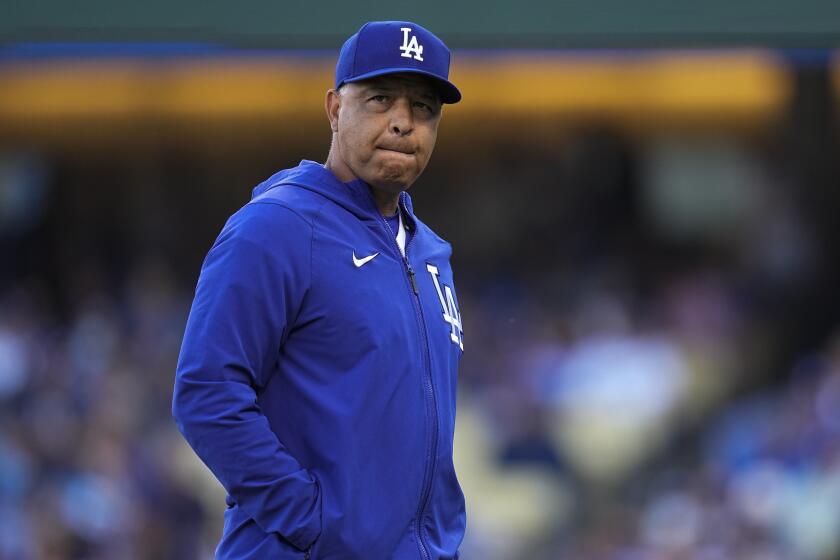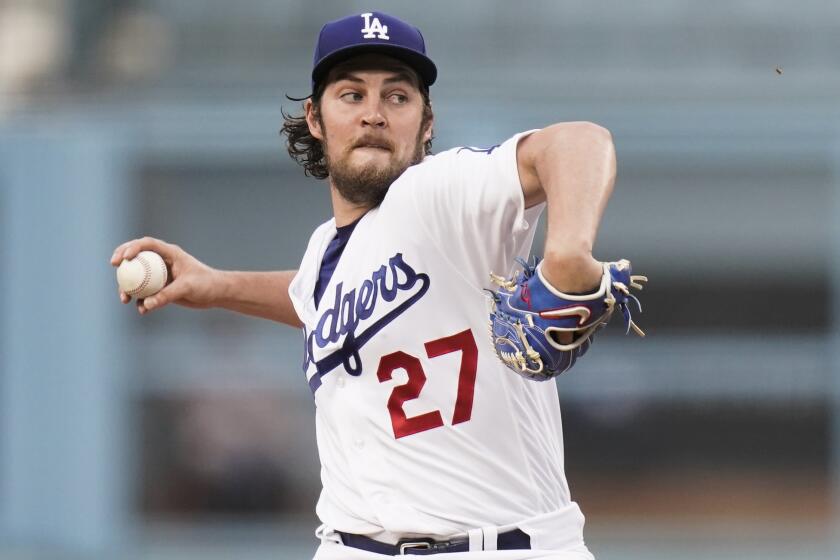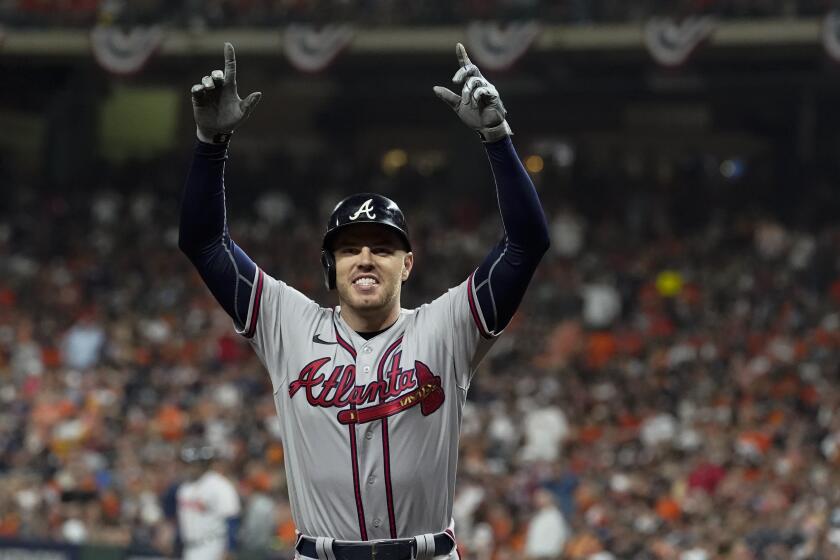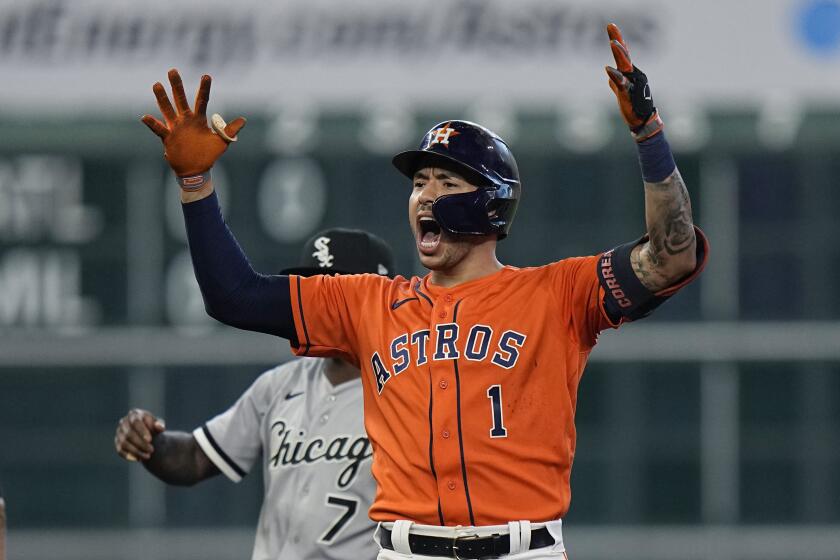‘More than ready’: How players stayed sharp during the MLB lockout
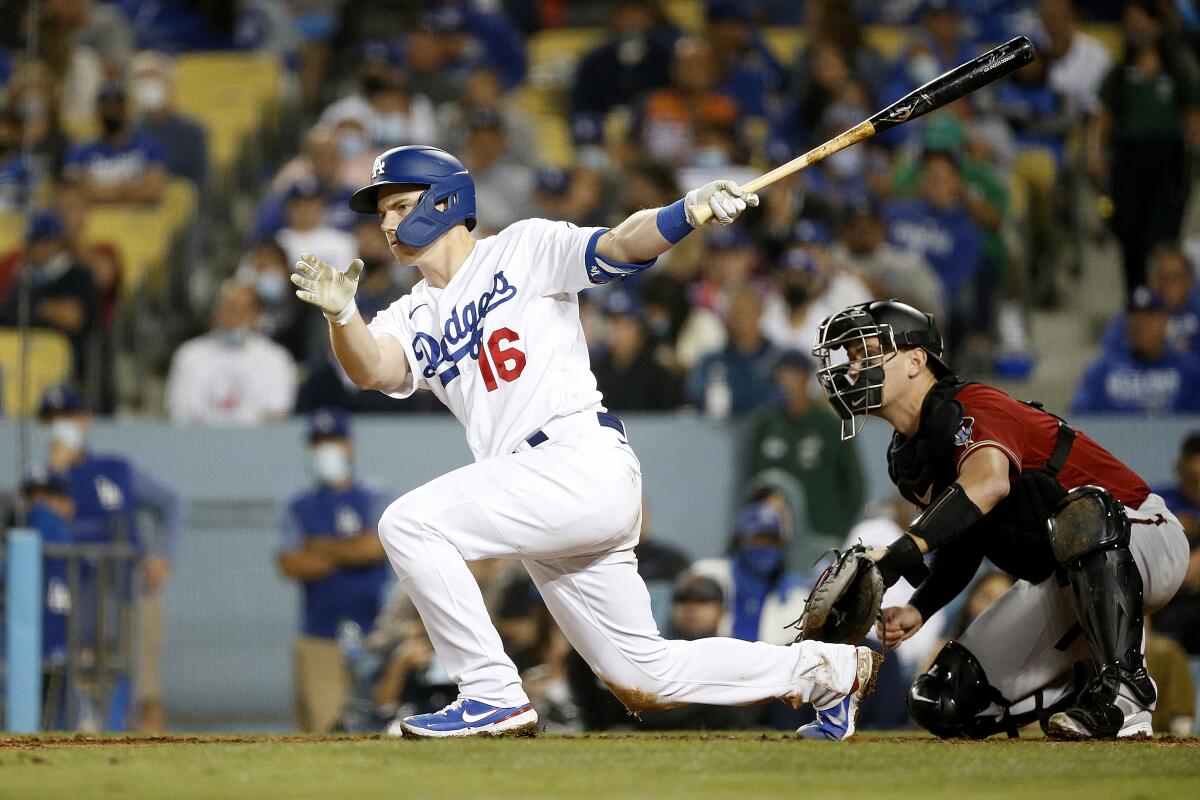
- Share via
PHOENIX — Dodgers pitcher Walker Buehler and Angels first baseman Jared Walsh shuffled back and forth across the Push Performance training center last week.
One minute, they were sitting on couches, intently listening in on a Zoom call with other players union representatives regarding the latest details of collective bargaining agreement negotiations. The next, they were back on the gym floor, going through sets of exercises with several dozen other big leaguers at the private facility near Phoenix.
“They would go work out, come back and talk on the call,” said DJ Edwards, the owner and director of Push Performance.
Added Walsh, with a laugh: “I went to the other side of the room [during the Zoom call] so I didn’t have to hear my voice on the echo.”
Looking back, the scene now seems humorous. But in the moment, it was a snapshot of the strain players had been under all winter — fighting a labor war while trying to stay ready for an uncertain season at the same time.
A resolution was finally reached Thursday, the owners and players union striking a deal to salvage a 162-game season that will open April 7. Spring training camps will officially begin Sunday. Exhibition games will start the following weekend.
Why haven’t the Dodgers re-signed Dave Roberts? Now that the MLB lockout is over, the Dodgers need to prioritize a new contract for their manager.
It will make for a preseason unlike any the sport has seen in at least a quarter-century, the last time a season was delayed by a work stoppage. Already, almost the first month of camp has been wiped out. The customary six weeks of spring ball will be condensed into three and a half.
Though regular season games weren’t lost, the run-up to this season will look markedly different. What the players did during the lockout will soon come into focus.
For three months, they were barred from team facilities and forced to work out on their own. Unable to contact their clubs’ coaches or trainers, they had to listen to alternative voices and trust their own intuition.
As the impasse dragged on, they had to get even more creative with their training, trying to mimic the routines of spring camp while the schedule became ever more unpredictable.
“It’s not completely unfamiliar territory,” Walsh said, referencing the parallels to the pandemic-shortened 2020 season. “But it is a little weird.”
Yet, players have maintained a sense of optimism as they’ve begun to report back to their teams — confident the sport’s on-field product won’t dip as a result of the labor dispute.
“These guys are going to be more than prepared, more than nasty,” Edwards said. “They’re going to be the best product of themselves going into spring.”
Here are the biggest issues the Dodgers and Angels need to address as they get ready for the 2022 season now that the MLB lockout is over.
::
Dodgers reliever Alex Vesia tried to enter the lockout as prepared as possible.
Before the old collective bargaining agreement expired at the start of December — at which point team personnel were no longer allowed to contact players — Dodgers coaches had given him a detailed throwing plan that ran all the way through April.
Having recently bought a house in Peoria, Ariz., just north of the Dodgers’ spring training complex, Vesia also set up a home gym, filling two spaces of his three-car garage with a squat rack, cable machine and sets of free weights.
Still, over the 99-day lockout, Vesia had to keep improvising. When he had questions about his pitches, he consulted one of his former private pitching instructors, who also lent him a Rapsodo data-collecting machine to use over the winter.
When it was time to begin throwing bullpens and live batting practice sessions, Vesia took to Twitter to crowdsource for an available field in Arizona, leading to an offer from a coach at nearby Desert Mountain High School to use his team’s facilities.
Even some of the simplest necessities proved challenging to obtain.
“It’s weird, but baseballs — that’s been a tough one,” Vesia said, noting he had been getting MLB-caliber balls from a friend while waiting for the delayed delivery of his own order.
What Vesia experienced wasn’t uncommon.
Many players trained alone or in small groups (Vesia also worked out with his roommate, independent league pitcher Andrew Fernandez, as well as Dodgers teammate Garrett Cleavinger).
Some attended the fully staffed camp run by the players union at a sports complex outside Phoenix, which was frequented by several Dodgers players, including Blake Treinen, Brusdar Graterol, Caleb Ferguson and Will Smith.
Others worked out at bigger private facilities such as the one Buehler and Walsh attended over the winter.
“They’re really excited to get going,” Edwards said, before laughing about how, in recent weeks, his players had started to tell him, “Hey, man, I love you. But I’m sick of seeing you.”
The early portion of the lockout was more manageable, with players sticking to normal winter routines under circumstances that felt similar to the pandemic shutdown of 2020.
“It’s pretty weird, but we had a little practice at this,” Walsh said. “Do your best to stay in shape, try to find a weight room or a batting cage.”
Now that the lockout is over, the Dodgers have to improve their roster to get back to the World Series. Getting Freddie Freeman from the Braves is a start.
The process, however, got more complicated over the last month.
Where offseason training often centers around building strength, the spring is for getting into game shape. Players begin taking live at-bats, throwing off mounds and getting defensive reps in simulated games to develop the fast-twitch reactions and instinctual physical movements they rely on every night during the season.
Edwards, who has been training major leaguers for 11 years, and had close to 40 locked-out players working out at his facility this winter, said the hardest part was “managing them to the point where we’re not overworking them in simulated games, overworking them in live [sessions].”
“They need to listen to their body,” he added. “We have Walker Buehler, who likes to throw a lot of pitches in live at-bats. And we have [San Francisco Giants pitcher] Logan Webb, who likes to throw 20-30 pitches in live at-bats, not as many. So it’s just managing each guy, knowing their personality and what they need.”
For Vesia, the challenge was similar. He had to self-regulate his workload, being careful not to overexert himself while weightlifting and throwing pitches. But he also focused on “making sure I’m competing, having the mind-set that whoever’s in the box — if it’s a high schooler or a junior college guy or a big leaguer — that I’m going to get them out.”
“It’s hard to pinpoint stuff,” Vesia added during a Tuesday interview, two days before the lockout ended. “There is that quick turnaround, so you have to have a balance.”
::
Before the lockout ended, the closest thing most big leaguers had to normal spring training was at Bell Bank Park in Mesa, Ariz.
That’s where the MLB Players Assn. had set up its own camp the last couple weeks, using the 320-acre facility to host players from across the league in a setting that somewhat resembled an major league complex — with four adjacent turf fields, two portable pitching mounds and a roster of other major leaguers to train with on a daily basis.
Even with the new CBA on the verge of being completed, the facility was busy again Thursday afternoon, with the four Dodgers players joined by others such as the Chicago Cubs’ Nico Hoerner and San Francisco Giants’ Austin Slater.
“We’re doing our best,” Smith said after completing cage work and a couple of rounds of batting practice. “The [union] set this up to come out here, get in the warm weather, get some reps in. It’s awesome.”
Major League Baseball has a new collective bargaining agreement and about 250 free agents are now ready to find new teams.
It was the latest example of why players are hopeful the next few weeks will be a mostly seamless transition into spring camp. Despite the lockout restrictions, they were able to stay in shape over the winter. Even while negotiating a new CBA, they got most of their typical on-field work done in recent weeks.
“I’m more than ready to go now,” said Ferguson, who is coming back from Tommy John surgery. “I’ve probably thrown more live BPs than I would have ever thrown during a normal offseason .... I’m ready to go. I’m ready to play.”
Of course, there will almost certainly be complications. Teams will have to quickly evaluate their players and squeeze any adjustments into a shorter window. Pitchers won’t have as long to build up stamina in spring games, which could affect their workloads for the first couple of weeks of the season. And there is the worry of increased injury rates, similar to what happened during the pandemic-shortened 2020 campaign.
But there’s optimism, too, that players effectively adapted during the lockout, that they’re entering spring prepared for the whirlwind ahead, and that after almost losing some (if not all) of the 2022 season, the salvaged 162-game campaign won’t be distinguished by lasting effects from baseball’s second-longest work stoppage.
“You don’t have your eye on every single player,” Walsh said, “but I think a lot of guys take it really seriously and want to show their hard work.”
More to Read
Are you a true-blue fan?
Get our Dodgers Dugout newsletter for insights, news and much more.
You may occasionally receive promotional content from the Los Angeles Times.

